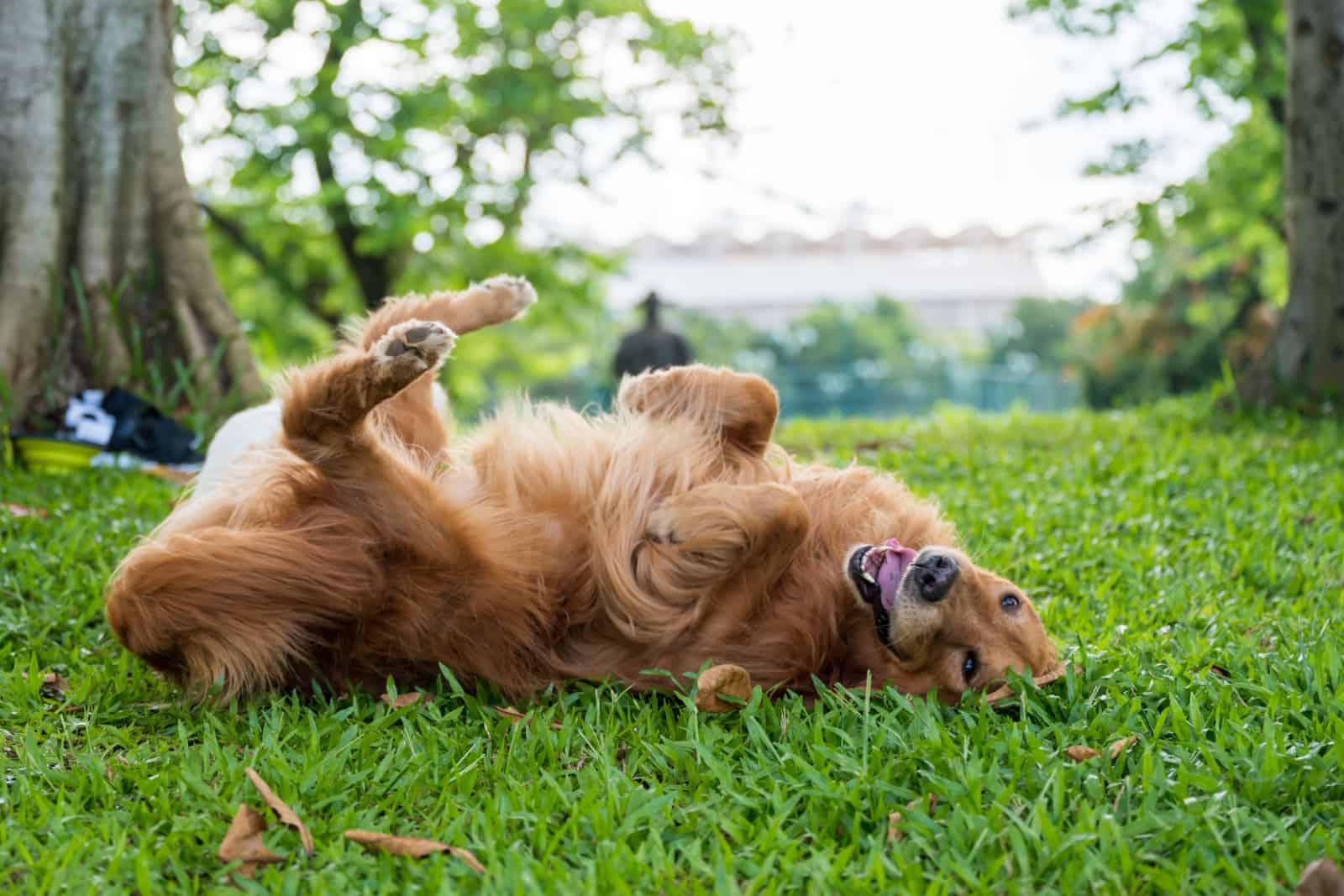Canine body language is extensive and quite intricate where seemingly similar gestures relay different types of intent with just a few bits of variation between the two.
One such form of expression is when your dog rolls on his back and wiggles.
It can be confusing to figure out at first, but the first hint (depending on expression) would be that they’re extremely excited to play with you.
So excited, in fact, that they have to burn some excess energy off by rolling around on the floor while panting and wagging their tails.
It’s a bit bizarre to see, but it’s the most common interpretation of such behavior.
However, there are a couple of other reasons for such a gesture which aren’t strictly trying to relay joy in that manner, but a couple of other things.
And that, dear pet parents, is what we’re going to uncover today, so here’s what your dog is trying to tell you.
1. Super Excited For Play Time
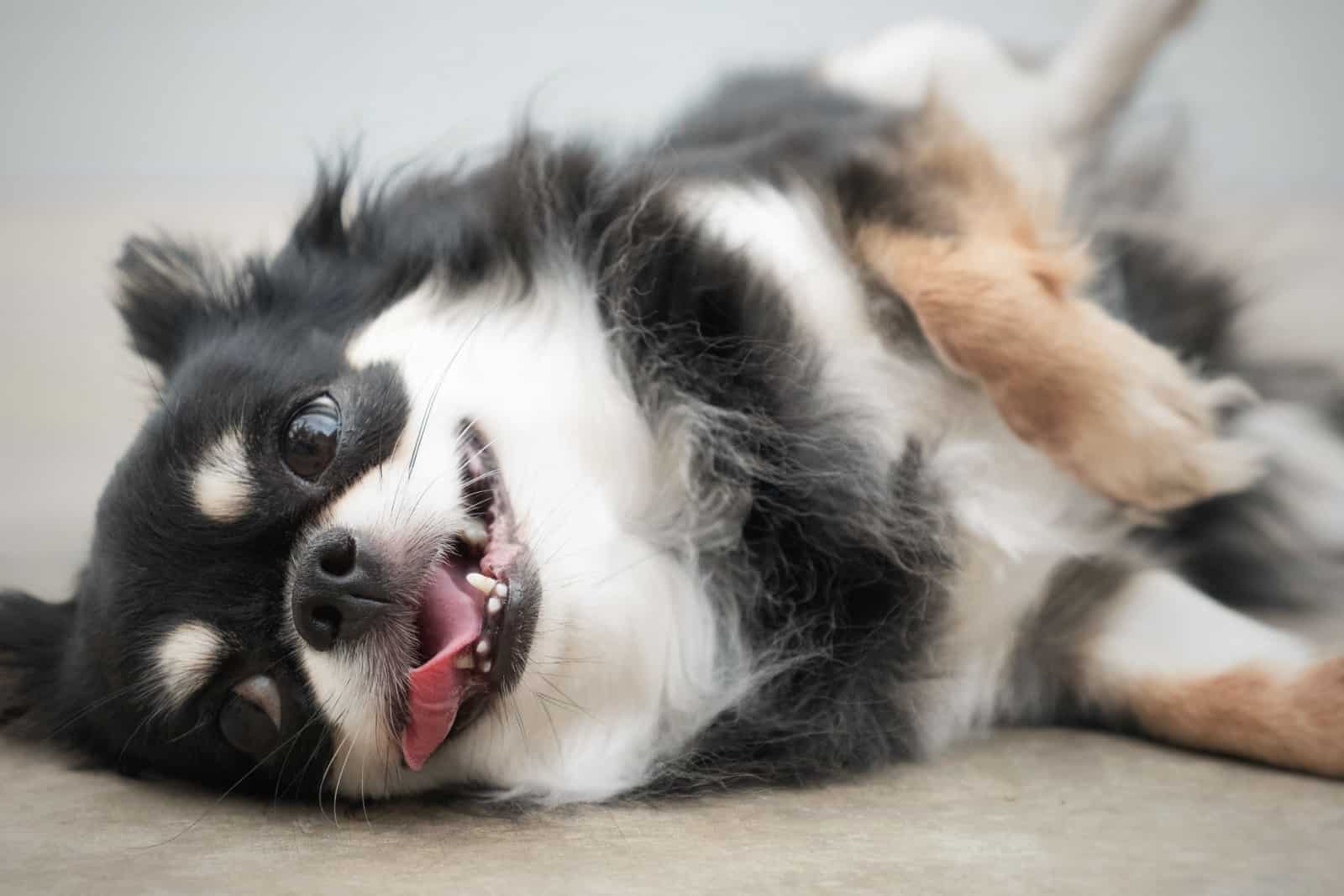
Let’s get the most common one out of the way first.
If you’re heading out into the backyard and your dog is in a playful mood, chances are he’s going to run straight into it and start rolling around on the grass.
He may do other accompanying gestures like wiggling about, wagging his tail or shuffling his paws about, but he’ll definitely have his mouth open and his tongue lolling out.
Expect some eye contact as well as clear intent that he’s doing this to grab your attention as he sheds off some excess excitement pre play time.
He may also do a similar gesture if he meets another dog, simply to show that he’s not being aggressive, rather that he just wants to play together.
2. He’s Trying To Cool Off
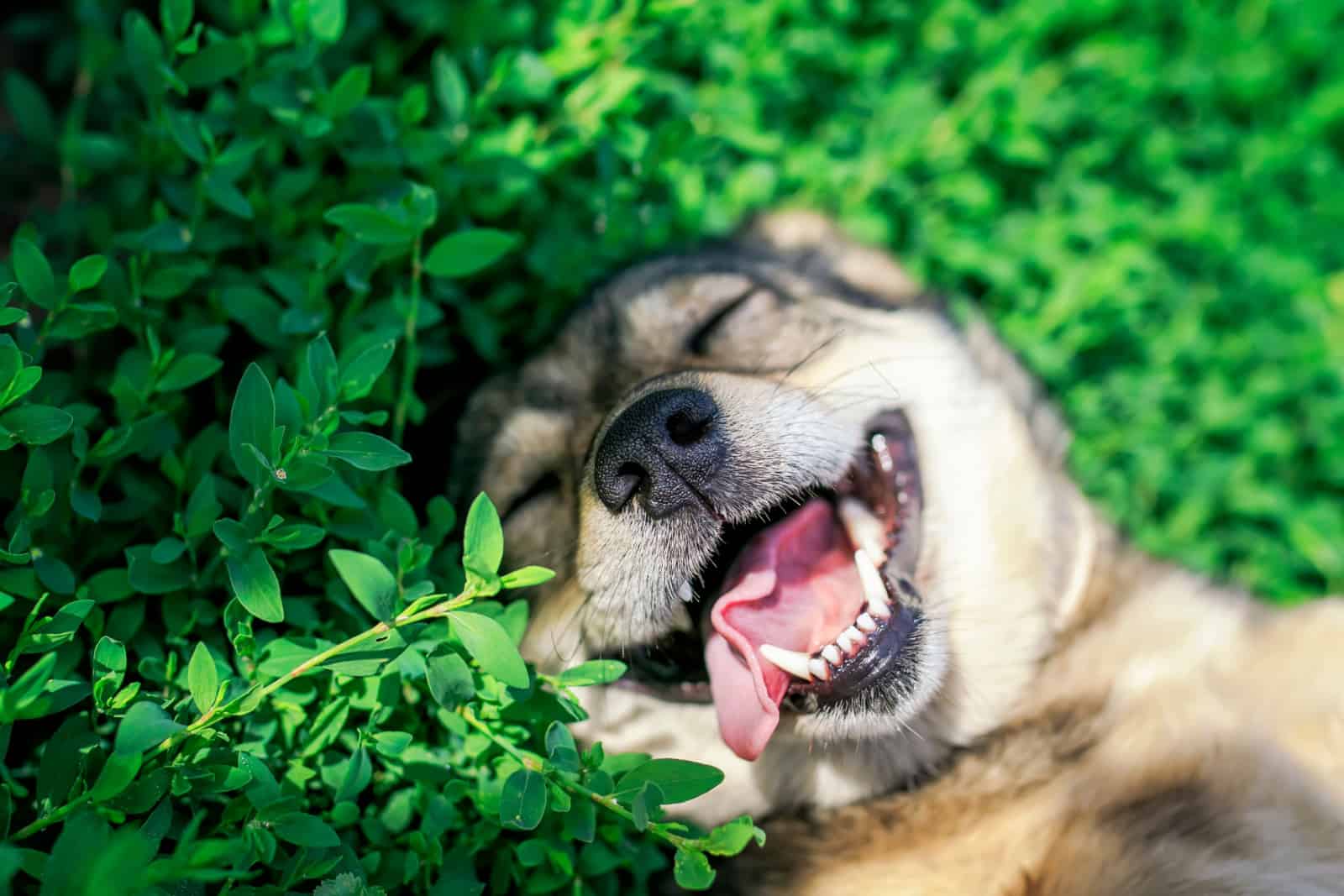
You know how dogs like to dig holes in the backyard? Well, some of them do it to get a cool spot to get a bit of reprieve from the blazing heat outside.
A similar method is employed here, albeit there’s no digging involved, or there’s simply no time.
Depending on the surface, you’ll see your dog just dive onto it and start rolling around it, especially if said surface is already cold.
The ground is more likely, but artificial surfaces which often retain their temps are the next best target.
While not a long term solution, it does provide your pooch with a brief respite to keep them comfortable in the heat for longer.
3. He Wants To Mask His Scent
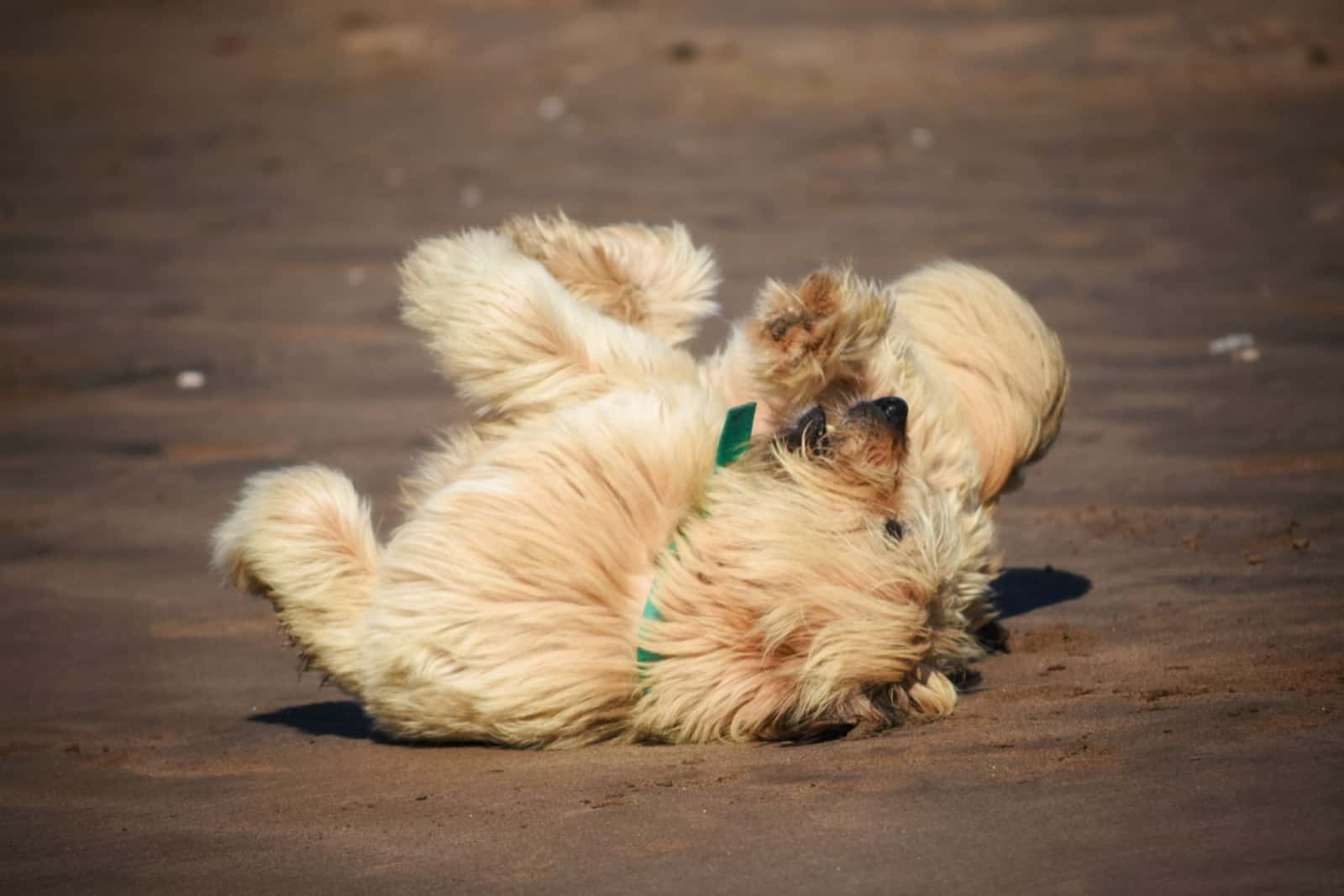
A yuckier reason, but a reason nonetheless. You see, given their lupine ancestors, dogs have retained the habit of trying to mask their scent when moving about.
Before, this was utilized as a way to prevent prey from spotting them so they could have a more successful hunt, and nowadays it’s just a force of habit.
While a good number of them aren’t hunters anymore, the instinct still remains, especially if they feel threatened.
The dogs may think it’s good, but you may think otherwise, especially if they decide to roll in some poop or mud which is going to stink something fierce.
Make sure to check him after rolling and hope he avoided any stinky substances otherwise you’ll have a cleanup in your future.
4. He’s Opening Up For Pets And Rubs
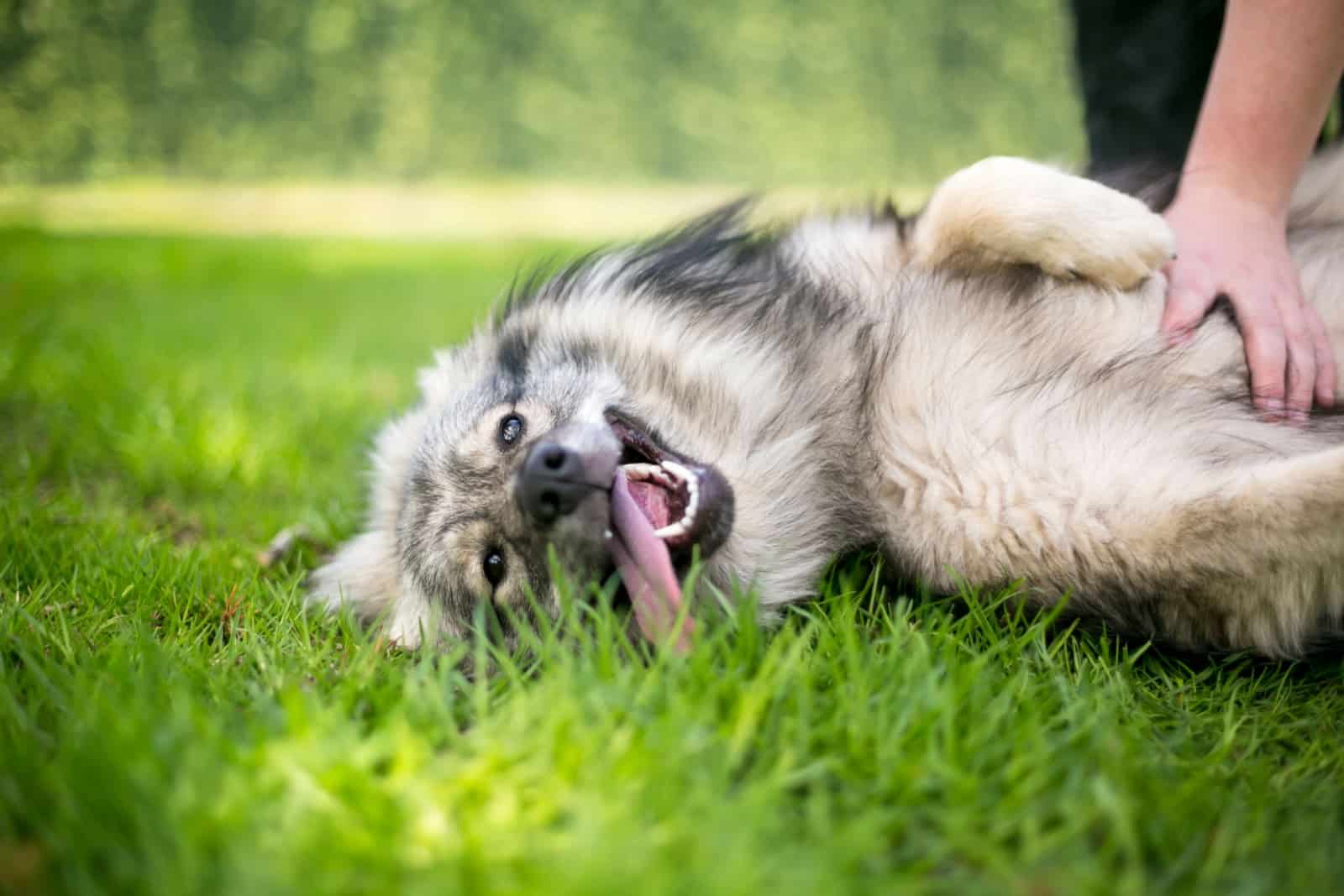
Back to a more obvious reason, dogs drop on their backs and roll slightly to expose their abdominal area, hoping for a belly rub.
Now, whether your dog is a good boy and deserves it or not is up to you, but know that if the movements aren’t too frantic, he’s looking for some cuddle time.
And, by splaying himself out like this, he’s trying to show that he’s approachable and that he won’t protest it.
5. Trying To Scratch An Itch He Can’t Reach
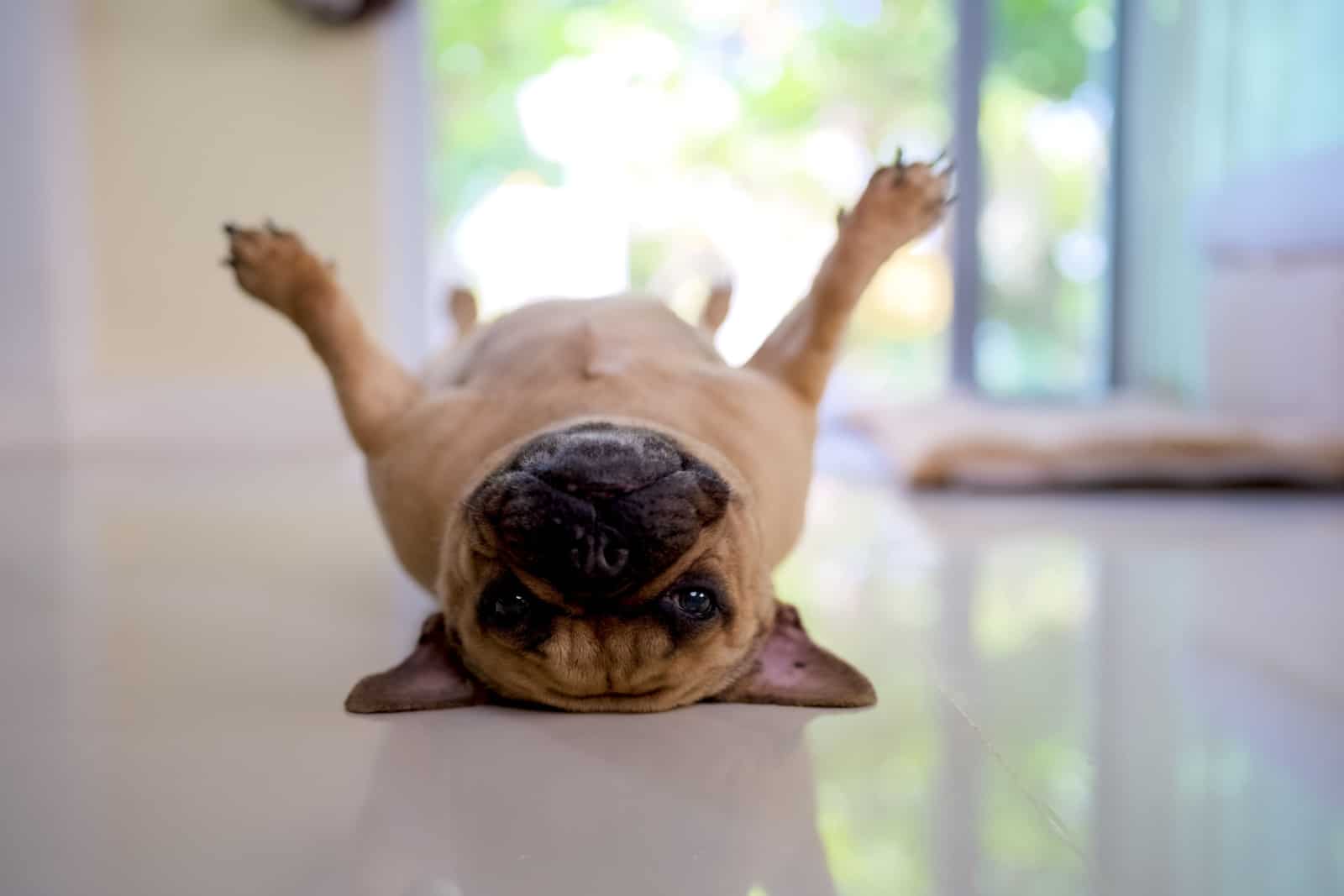
If your dog is suffering from a rash that’s located just around the back area where his back foot can’t reach, then chances are he’ll be rolling on a rougher surface to try and scratch it.
This is also applicable if he’s contracted ticks or fleas and they’re being particularly stubborn.
If you see him doing this often and for little other clear reason, then give him a check for these nasty parasites and act accordingly to remedy the situation.
RELATED: Understanding Canine Parasites And Fighting Against Them
6. Doing It As A Protective Stance
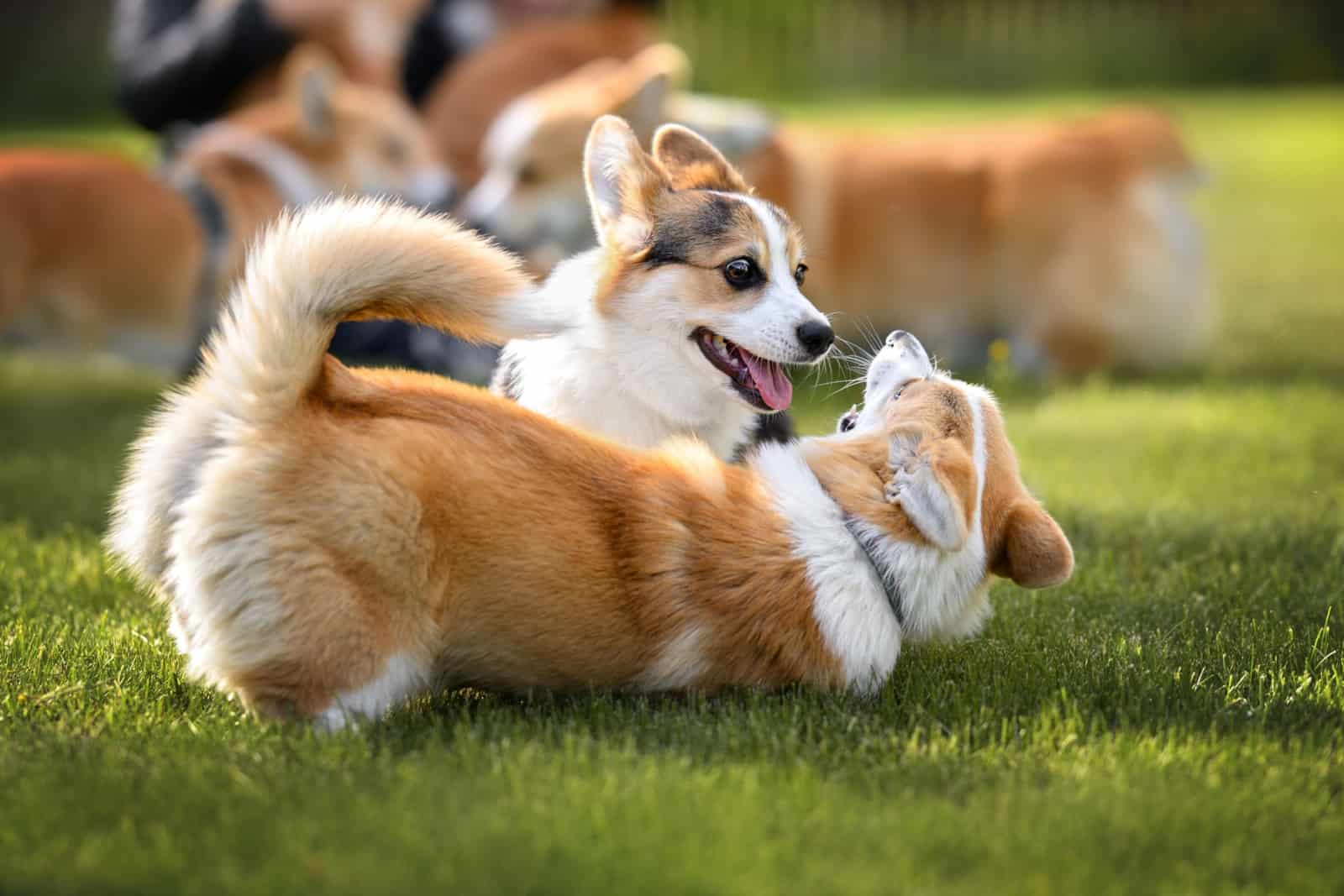
Another habit from their past, albeit one that’s actually useful today to some degree still is doing the rolling motion as a means of defense.
In the past, this was done during hunts to try and protect from prey that’s fighting back or when fighting another animal off in general.
Think of it as a brief duck to shield their vitals from their would-be attacker so they could find an opening to strike back.
Nowadays, the most likely time where you’ll see it is when he’s play-fighting with you or other dogs as a means of dodging away from said attacks.
However, if your dog has been through some trauma, it may end up being used as a defense mechanism too if said trauma is triggered.
The way to notice this particularly negative behavior is that it’ll be followed up by clear signs of aggression used in self defense like him barking angrily or trying to bite back at anyone who comes close.
If that seems to happen often with no signs of the trauma winding down, it may be best to talk to a pet behavior expert in order to try and get it under control.
How Can I Tell The Difference?
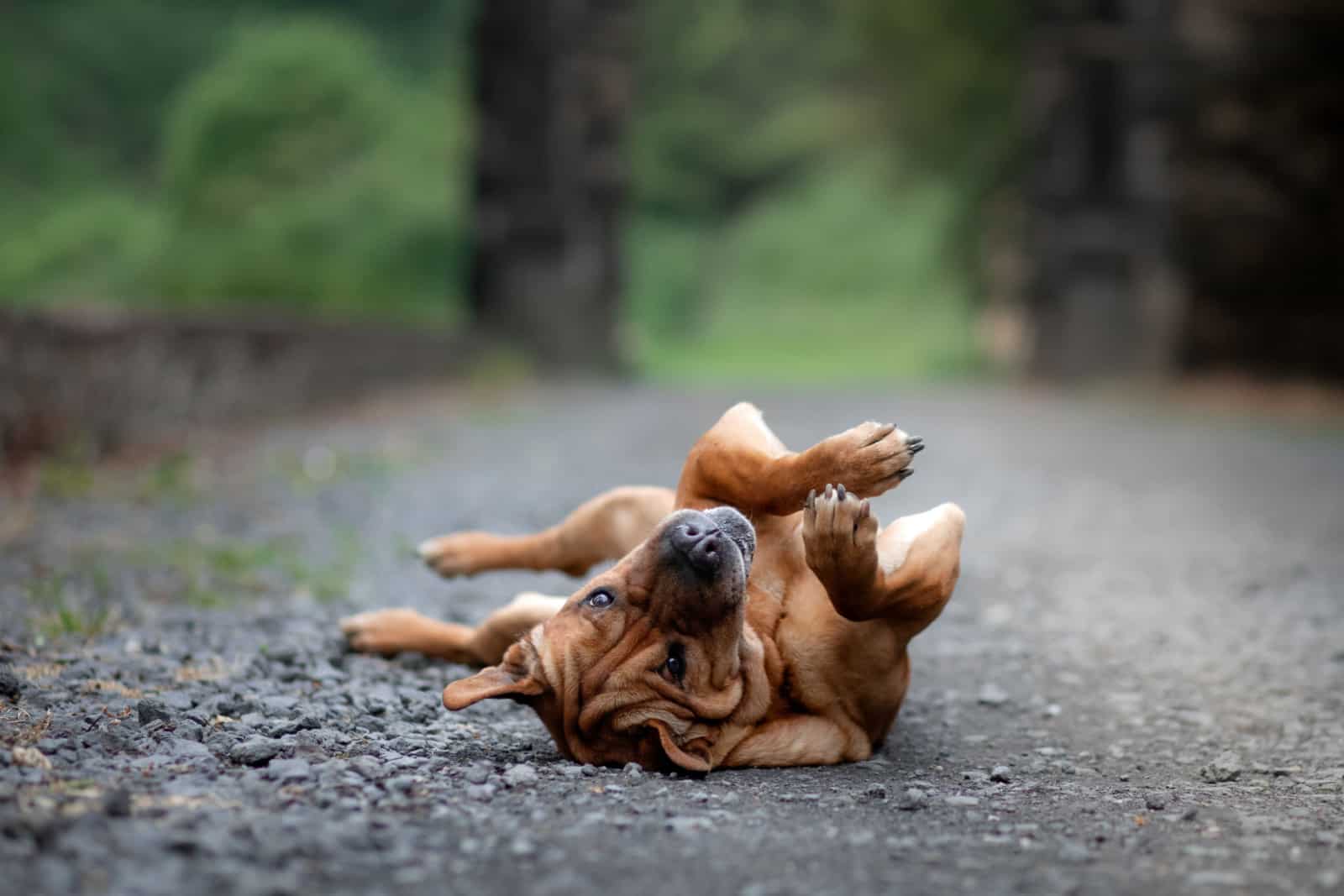
While similar, the main way to differentiate between the different signals is pure context.
The rolling around and wiggling won’t be the only signs they’re displaying, they’re just the ones these 6 above have in common.
Tail position, facial stiffness and expression as well as frequency of rolling and wiggling all play a part in relaying different messages as well as the events leading up to it.
In Conclusion
As you can see, there are plenty of reasons behind this rolling and wiggling behavior that your dogs exhibit, but in order to figure out what they mean, it’s important to know the context.
If your dog is looking back at you with a relaxed expression while performing the act, then he’s either looking for bellyrubs or is looking to play.
On the other hand, if he’s looking away from you or is showing signs of aggression on his face with a stiff expression, then he may be on the defensive due to trauma or other pains.
If the rolling behavior is too frequent, then your dog may be infected by some fleas.
While it won’t be as clear at first, knowing these signs will help you figure it all out with time.
Just know that it rarely ever relates to a serious condition aside from the potential parasitic infestation or a trauma trigger.
Just be sure to gauge it carefully and not frighten him.
Until next time, pet parents.
RELATED LINKS:
